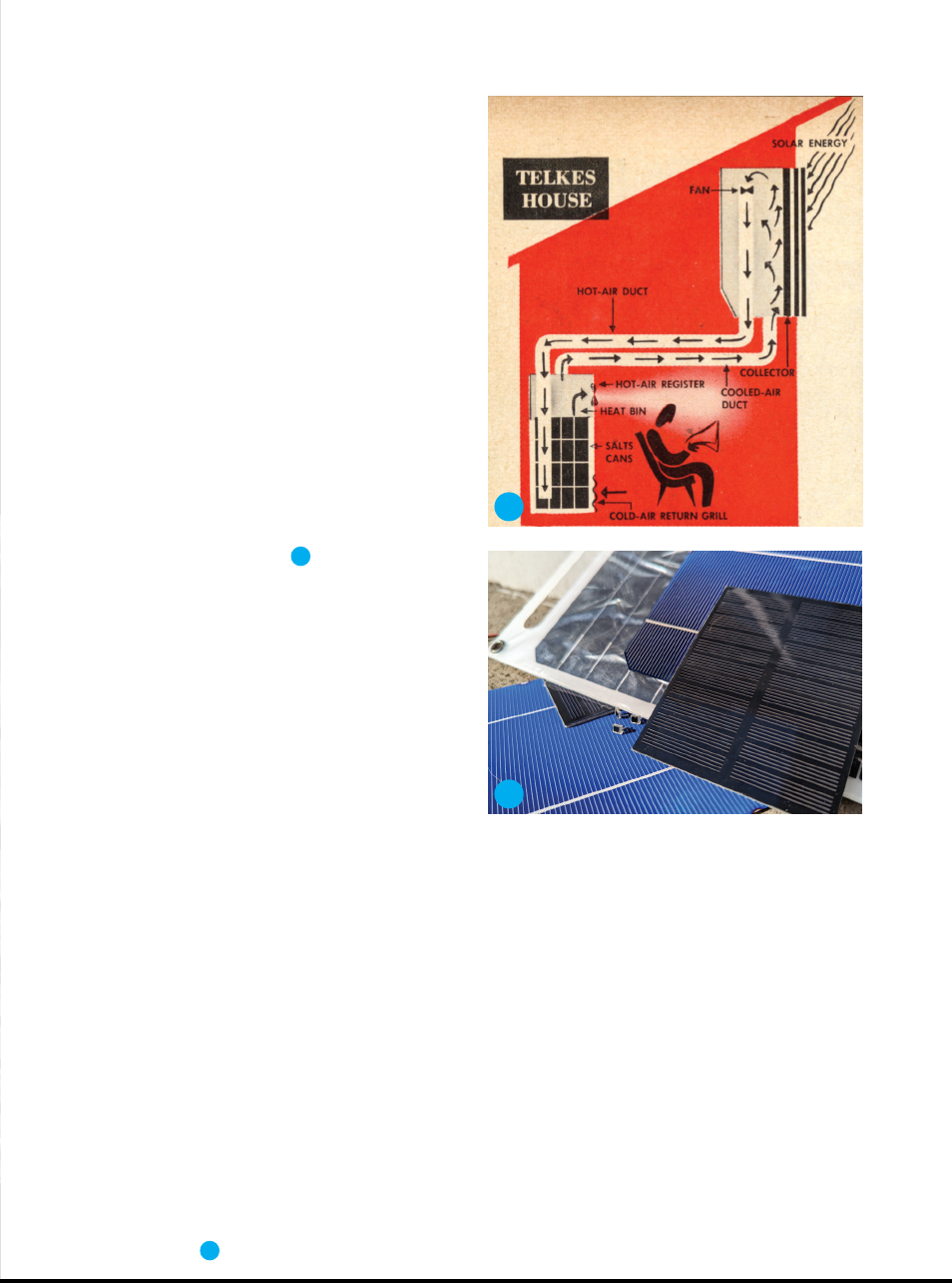
It’s fun to use mini solar cells to charge your
gear or power small gadgets, and once you’ve
learned the basics you can scale up to bigger
panels. Let’s explore ways you can harness
solar energy for your own DIY projects — mobile,
wearable, or otherwise — and say goodbye to
(some) batteries and plugging things in!
EARLY SOLAR ENERGY
While the first solar electric panel is credited
to Bell Labs in 1954, there have been a variety
of other solar-powered devices for hundreds of
years. The cell produced by Bell chemist Calvin
Fuller and physicists Daryl Chapin and Gerald
Pearson was the first silicon solar cell, following
their success with semiconductors in 1947.
Solar heat energy has also been used in a
variety of ways, including architect Eleanor
Raymond and MIT engineer Maria Telkes’s Dover
Sun House in 1948 (Figure
A
). What looked like
a wall of windows was actually a heat-collecting
panel, with hot air transferred into “heat bins'”
containing chemical salts which absorbed heat
and stored it for later. The goal was to store
enough energy to heat the building two to three
days without sunlight. The processes Telkes
developed are still used in molten-salt energy
storage systems today.
Of course, solar energy goes way back to
ancient civilizations using sunshine to dehydrate
foods, using magnifying lenses to light fires, using
reflection and positioning to tell the time or light a
room, among other uses. When we think of it like
that, contemporary solar cells are just a single
point on a long continuum of solar possibilities!
PHOTOVOLTAIC PHENOMENA
Solar panels utilize what we call the photovoltaic
effect — the ability of a material to emit electrons
when exposed to light — to produce electricity.
This effect was observed as early as 1839 by
French physicist Alexandre-Edmond Becquerel,
who discovered that metal electrodes in an
electrolyte solution produced a current when
exposed to solar radiation. Although at the time
he couldn’t explain it, it lay the foundation for
what was to come.
Today many solar cells are made primarily of
silicon (Figure
B
). Silicon is a semiconductor —
A
a material that partially conducts electricity, but
also has some of the properties of insulating
materials that don’t conduct.
A SINGLE CELL
A solar panel like you might see on someone’s
roof is made up of many individual solar cells
that are wired together. Each solar cell works by
converting the sunlight hitting the semiconductor
into electricity. The energy from the light
(photons) is absorbed into the panel, which
knocks electrons loose in the cell.
Each cell is designed with positively (p-type)
and negatively (n-type) charged semiconductors
in a sandwich, which creates an electric field
that forces the drifting electrons to flow toward
conductive metal plates on the outer layers of the
cell, and then through wires like any other source
B
Lee Wilkins; Popular Science, March 1949
75
make.co
M82_074-80_SquishyTech_Lee_F1.indd 75M82_074-80_SquishyTech_Lee_F1.indd 75 7/12/22 10:43 AM7/12/22 10:43 AM
..................Content has been hidden....................
You can't read the all page of ebook, please click here login for view all page.
